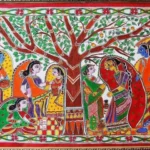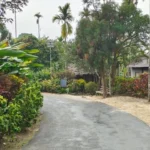
In today’s fast-paced world, often likened to a relentless rat race, we find ourselves constantly on the move, chasing goals and striving to fulfill our dreams. However, this endless pursuit often comes at the expense of our physical and mental well-being. While we may not be able to slow the pace of the world around us, we can take charge of how we care for ourselves.
Taking regular breaks to detoxify the body, restore energy, and bring clarity to the mind is essential. One simple and natural way to achieve this balance is through Panchakarma therapy. In this blog, we will dive into what Panchakarma is, how it works, the many benefits it offers, and why India remains the ultimate destination for this Ayurvedic treatment.
An important part of Ayurveda, the ancient Indian system of medicine focused on holistic well-being, Panchakarma is the process of detoxifying the body and restoring harmony to the three doshas: Vata, Pitta, and Kapha by following five procedures. These doshas are ‘fundamental energies’ that govern the physical and mental health of our body. When the toxins accumulate in our body due to poor diet, stress or environmental factors, they create an imbalance in the fundamental energies, leading one to fall ill. Panchakarma, therefore, helps in cleansing the body and restoring the balance, which in return also improves mental health along with physical health.
Panchakarma treatment has a wide range of benefits. It helps eliminate toxins from your body, improving overall physical, mental, and emotional health. Many people report weight loss, better sleep, and a profound sense of inner peace after completing the therapy. Below are some of the health benefits of Panchakarma:
The Panchakarma treatment consists of three distinct phases, each serving a specific purpose and playing a crucial role in the overall success of the therapy. It is important to note that just as every individual is unique, Panchakarma is also personalized, tailored to meet each person’s specific needs. The following is the three-stage Panchakarma process:
This is the phase where your body is prepared for detoxification. Prior to the detox, your body is primed to loosen and mobilize toxins. This phase involves the following:
Snehana: To prepare your body, therapies like Abhyanga (warm oil massage) are given to lubricate tissues and soften toxins.
Swedana: In this, herbal steam therapy is given to promote sweating to open channels of elimination.
This is the core cleansing stage, where one or all five Panchakarma therapies are given, targeting specific doshas and toxins. The following are the five treatments of Panchakarma.
Vamana (Therapeutic Vomiting):
This procedure is used for individuals experiencing a Kapha imbalance. It involves administering emetic herbs to safely induce vomiting, helping to remove excess mucus and toxins from the upper respiratory tract, gastrointestinal system, and lymphatic network.
Virechana (Purgation):
This procedure is designed to eliminate Pitta dosha for the body. It involves a laxative therapy to induce bowel movements, cleansing the gallbladder and gastrointestinal tract, and aiding liver issues and skin disorders. Pre-treatment procedures involve internal and external oleation (oiling), followed by a specific diet.
Basti (Medicated Enema):
This procedure is used for individuals experiencing a Vata imbalance, which is associated with the nervous system. In Basti treatment, herbal decoctions, oils, or pastes are introduced through the rectum to cleanse and nourish the colon. The treatments address concerns like constipation, indigestion, and weakened immunity.
Nasya (Nasal Therapy):
This therapy involves administering herbal oils or powders through the nasal passage to clear the sinuses, head, and respiratory passages. It eliminates toxins and benefits those with respiratory conditions, allergies, and headaches.
Raktamokshana (Bloodletting):
This Panchakarma therapy, though rarely practiced today, was traditionally used for blood purification through specialized techniques such as incision, venesection, leech therapy, and cupping, each targeting specific conditions and areas of the body. Raktamokshana enhances blood circulation and helps alleviate issues like skin disorders, arthritis, and certain chronic diseases.
In this third and final stage of the Panchakarma treatment, the focus now shifts to rebuilding and strengthening the body. A special Ayurvedic diet and lifestyle are recommended during this phase to help your body fully absorb the benefits. The post-treatment phase of Panchakarma involves:
The Panchakarma program lasts 7– 42 days, depending on your health goals and diagnosis. A typical Panchakarma usually lasts for 3 weeks (21 days).
Consultation: There will be a detailed consultation to assess your dosha (fundamental energies) and medical history.
Treatment: Post consultation, the right Panchakarma treatment is suggested. The treatments can be intensive, requiring following a simple diet (lentils, vegetables, and rice) and plenty of rest. One needs to avoid strenuous activities and the consumption of caffeine and alcohol for better results.
India is the birthplace of Ayurveda, of which Panchakarma is a vital part. Therefore, getting a Panchakarma treatment in India is unarguably your best decision. An authentic Panchakarma centre in India follows a structured, doctor-supervised Ayurvedic process. Treatments are personalised, rooted in ancient medical texts, and designed to cleanse toxins to aid physical, mental, and emotional well-being rather than just offering temporary relief.
India has a conducive weather and environment for Ayurveda treatment. The states of Kerala make the best Panchakarma destinations in India. The monsoon season (June–September) in Kerala is considered ideal, as the humid weather opens the body’s pores, making it more receptive to herbal oils and treatments, thereby enhancing detoxification and healing. The lush, tropical landscape of Kerala also supports the growth of a variety of medicinal plants and herbs used in treatments, ensuring effectiveness.
Similarly, Goa’s lush settings and humid weather make it another great destination for Panchakarma treatments in India. The wellness resorts in Goa not only offer authentic therapies but also provide affordable packages, making holistic healing accessible to a wider audience.
On the other hand, the cool temperature of Uttarakhand makes it a strong contender for a good Panchakarma destination in India. The salubrious climate supports therapies by keeping the body calm and receptive. Places like Rishikesh and Haridwar are ancient centers of yoga, meditation, and Ayurveda. The spiritual vibrations of these Ayurveda centres in Rishikesh and Haridwar create an ideal atmosphere for holistic healing.
Panchakarma offers a great opportunity to pause, cleanse, and retain your natural state of health. This Ayurvedic therapy is a lifestyle shift that empowers you to live with greater vitality and awareness. If you’re seeking relief from a specific ailment or simply craving a reset, Panchakarma can be your most trusted way back to wellness. Ready to embark on this transformative journey? India’s Ayurvedic centers are waiting to help you rediscover balance. Take the first step by booking your Panchakarma treatment in India and rediscover the true meaning of health and harmony.

Best Places to Visit in Dubai with Kids
02 Jul 2025
India’s Finest Luxury Retreats: The Ultimate Hotel & Resort Collection
01 Jul 2025
Taj Holidays’ Wildlife Retreats: Where Nature Roars and Luxury Whispers
30 Jun 2025
10 Indian Art Forms You Can Experience During Travel
29 Jun 2025
12 Most Beautiful Villages in India Worth Visiting
28 Jun 2025